Vintage_Mania
Bachelor Dog
- Joined
- Apr 11, 2012
- Messages
- 11,311
- Reaction score
- 3,216
- Location
- Eersterivier
- Bike
- Triumph 900 Scrambler
NO-HOLDS BARRED FACTS
Okay, the bug has taken a chomp right in your "gotta-have-one" vein. You absolutely must have a vintage bike. Rational thought has nothing to do with it. You’ve seen these pristine examples at the races competing in the vintage class, and steam is coming out of your nostrils.
Hold on, sport. There are a few things you ought to know before you run out and buy a dusty old 1971 250cc WartHog Mark II.
WINNERS
First off, there are good vintage bikes and bad ones. Not so much in how competitive they are, but in several other important areas, such as ease of finding parts, basic reliability of the bike and resale value should you decide to change horses later on downstream.
We think the following bikes (in no particular order) are excellent candidates:
MAICO: Square-barrel models from 1970 thru 1972.
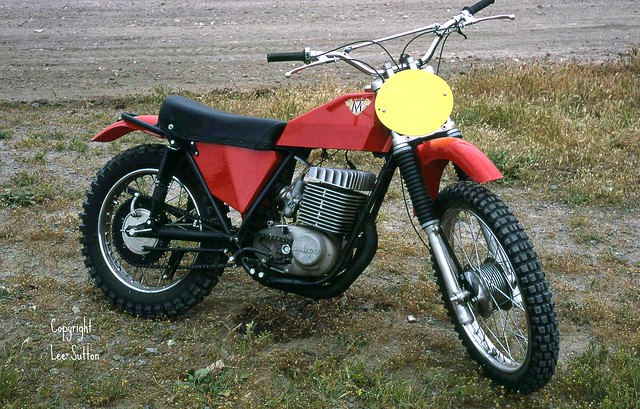
MAICO: Radial 250s and 400s (1973 and 1974). Avoid the 450cc models, as they had troublesome clutches and were not any faster than the 400s.
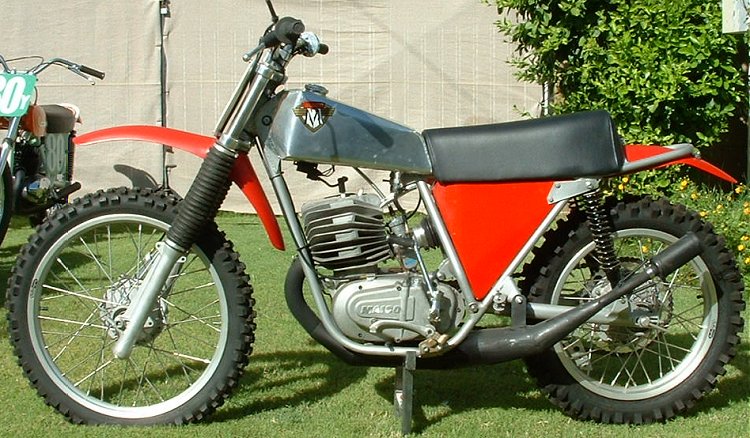
HUSKY: Any model from the late '60s through 1971. Avoid the 1972 and 1973 models, as they were 25 pounds heavier than the older bikes and not very reliable. 1974 was a decent year, except for the 450 Desert Master.
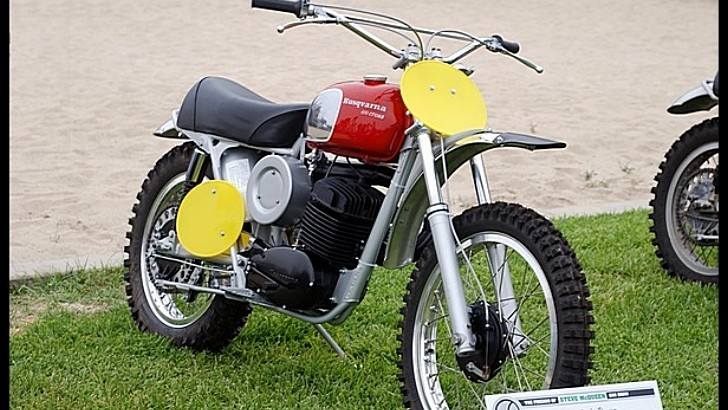
CZ: If you can find an early twin-pipe model, grab it, no matter what the condition. The price of these highly sought-after models keeps going up steadily. Alternatives are most any 250, 360 or 400 model. Particularly good years were 1970 and 1971.
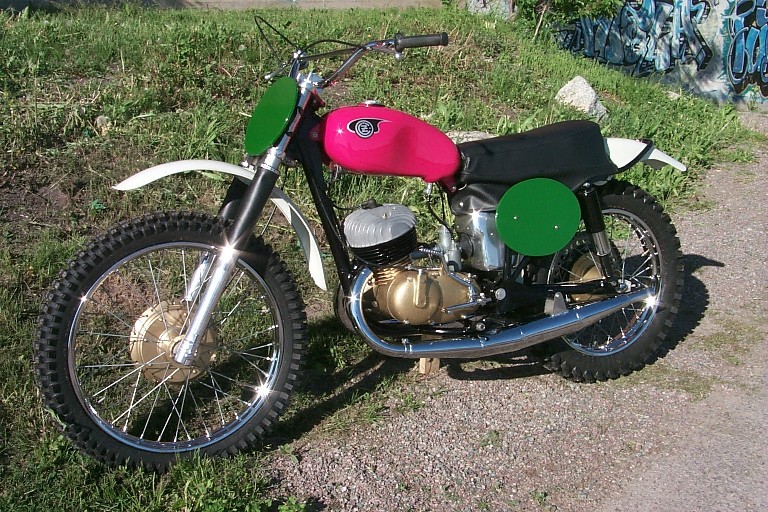
YAMAHA: Most any solid DT-1 would make a great trail bike and parts are readily available. Early (1969 thru 1971) MXers were fast, but were evil handlers. Still, there are many mods available to make them work acceptably. Early YZs are great vintage bikes and the horsepower they put out is almost competitive today.
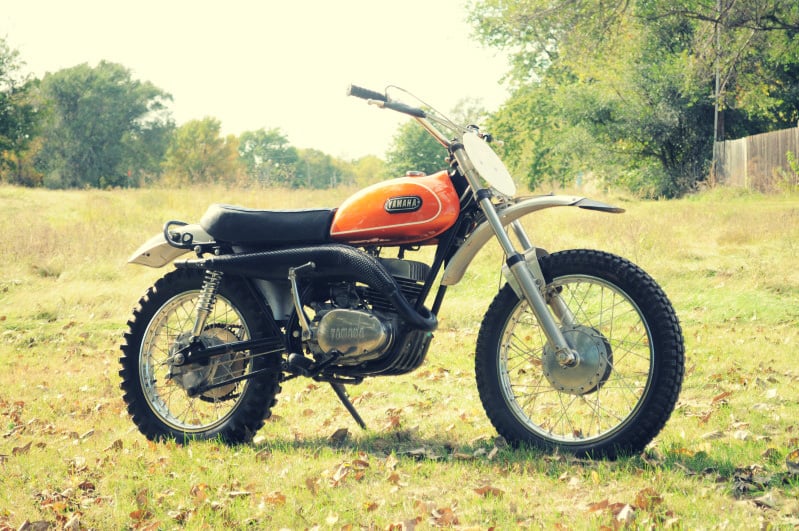
HONDA: Find an old XR-75 and you’ll have the world’s favorite pit bike. Find a clean 1973 125 or 250 Elsinore and you’ll have a superb vintage racing bike.

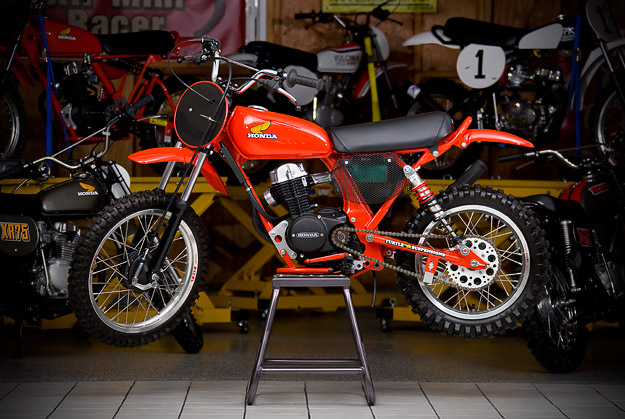
KAWASAKI: There was a 100cc racer made in the late 60s that put out a guaranteed 18.5 hp. I believe it was called a Centurion. Find one of these and you’ll smoke many of the full-sized bikes.

Kawasaki also made a rotary-valved 238cc racer that was a rocket ship (around 1970) that pumped out some outrageous horsepower and gobs of low-end torque. Restore one and holeshots will be yours. There was also a Rickman-framed version of that bike that was a bunch lighter than the stock Kawasaki. Finding one will not be easy, but if you can locate one, go for it.

SUZUKI: One model stands out, the 1973-74 TM-250 Challenger. Smaller, lighter and nowhere near as violent as the TM-400, it had a few handling quirks, but was fast and reliable. They also offered a screaming little 100cc version with good handling traits. This yellow zonker would do well in vintage racing and was more reliable than a claw hammer.
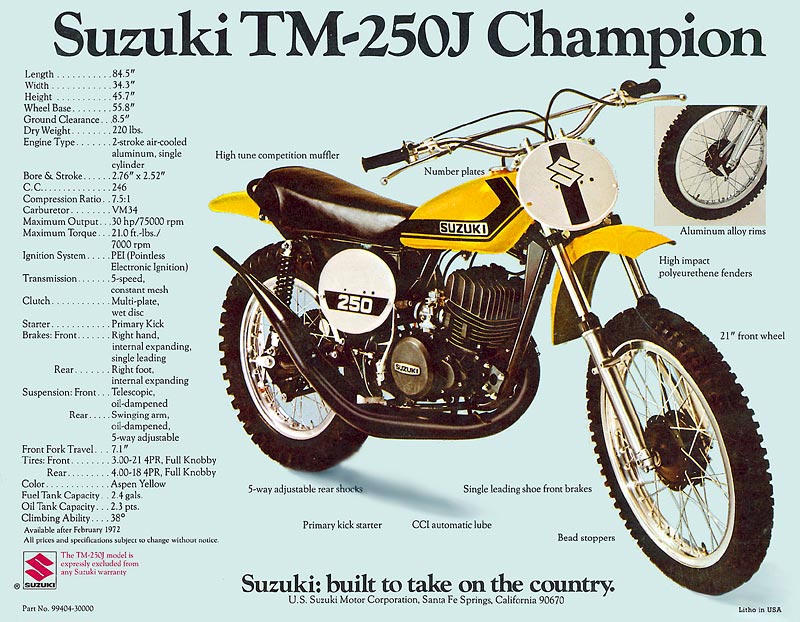
BULTACO: Face it, the beautiful blood red Pursangs were faster than stink and about as reliable as a candle in a windstorm. If you restore one, do you think it’ll be any more reliable than it was originally, just because you put a ton of tender loving care in the rebuild? Still, these early Buls were classy-looking, supple handlers and are handsome enough to be considered true classics.

They made a Bultaco in 1968 called a Bandito. It was a 360cc MXer with enough horsepower to spit rocks through windshields in the parking lot. It also handled like someone left out the swingarm pivot bolt. But, lordy, was it a thundering rocket ship! Get one and learn to respect it; people will flock around and oooh and aaaah a lot.

Some of the open class Buls up to 1974 are excellent candidates for vintage racing. They had smooth low-end torque, handled well, were lightweight and proved more reliable than the hand grenade 250cc models. Still, plan on babying the gearbox if you want it to live.

MONTESA: Other than a white-framed, orange-glassed Cappra, the entire line of Montesas is simply not worth getting into. Even that 250 Cappra weighed 242 pounds, very heavy for a middleweight of any era. If you can locate a 1974 Vehkonen Replica (VR-250), it’s worth considering.
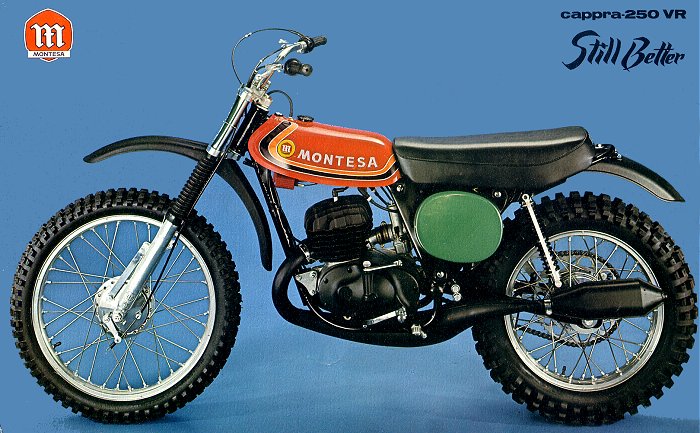
GREEVES: Parts are not easy to come by, and they are not competitive, but they are unique enough to merit your attention. Resale value alone makes them worthwhile, and they do look funky. Best bets are 250s and 360s from the late 60s and the early 70s. If you want to do well in vintage racing, consider one of the 380 QUB Greeves from late 1972 or 1973.

OSSA: In the early 70s, Ossa produced the dynamite Stiletto, a 250cc racer with a wide spread of power and excellent reliability. I’ve always thought that Ossa was the cream of the crop of Spanish bikes.

Late in 1974, Ossa released the first Phantom, a 197-pound missile that set new standards for performance. Only a cruddy set of Betor shocks kept this bike from being a world-beater. That, and a confused company that wasted all of its money on small-bore road racing efforts.

PENTON: John Penton had KTM build him some great bikes, and the best of these were the 250 and the Mint 400, a 352cc machine that weighed little more than a 250. You could win a vintage race on one of these beauties, and parts are still around.
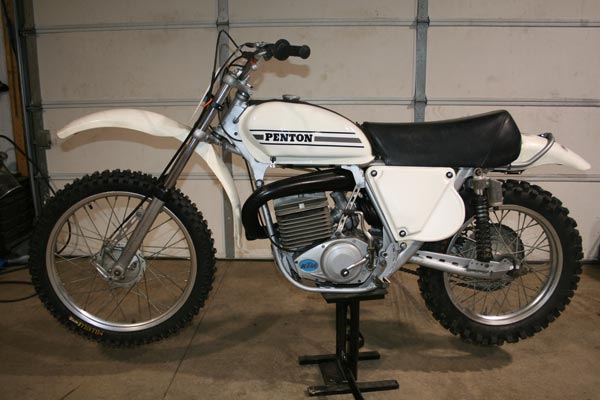
HODAKA: Think about a 1973 Combat Wombat or a 1972-73 Super Rat if you want a bike with a huge chromed tank and a lot of personality. Parts are readily available.
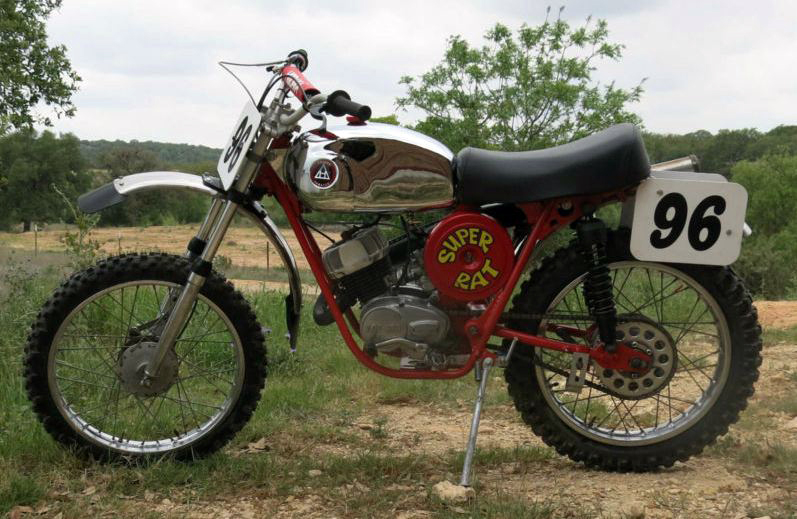

TRIUMPH: Go for it! No question about it, a Triumph is one of life’s true joys. If you haven’t ridden one, then shut up. Forty cubic inches of horsepower is not to be sneezed at. And if you can locate a Rickman Triumph in good shape, don’t buy it. Instead, call me and let me buy it. Many consider these the most beautiful dirt bikes ever built. Yeah!

BSA/NORTON/ROYAL ENFIELD/MATCHLESS, ETC, ETC: We sort of lumped these all together. You either are a British bike fan, or you are not. Show up at the races with a fully restored British twin or single, and spectators will slobber and drool all over the ground. Parts are still around, but pricey. Resale value is good.

BEST BETS: Consider CZs, any good Husky, a clean Maico, or a 1973 Elsinore. A good YZ or a dirt Triumph will be a knockout for years to come.
LOSERS
Look, if you really want to restore one of the "off-brands," or unpopular bikes, go right ahead. Just don’t plan on racing it in the vintage class. Reasons are many, but the prime ones are high part prices, poor parts availability, bad reliability record, non-competitive nature of the beast, lousy handling, and all the accompanying traits of a rare or unpopular machine.
Build it, ride it every now and then, let people enjoy looking at it and hearing it run, but don’t plan on using it on a regular basis. We feel that dirt bikes are meant to be ridden and enjoyed. Our list of losers, admittedly incomplete due to space limitations, is, nonetheless, extensive:
MAICO: Forget about racing the 125cc six-speed Maico. It took a mad dog genius to keep the gearbox alive and was a nightmare to service.
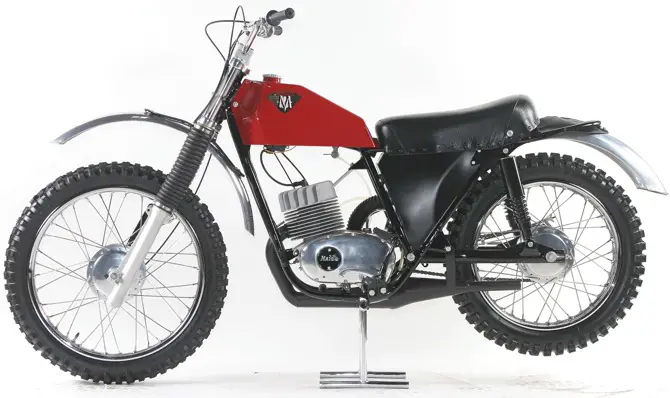
HUSKY: Husky would rather forget the 450 Desert Master. It was put together by engineer Ruben Helmin at the behest of a relative, and he still frowns when you mention this model to him. Husky had wretched years in 1972 and 1973. Go earlier. Go later. Just avoid this time period. Another loser of this era was the 360 Enduro, quite possibly the most embarrassing woods bike Husky ever built.
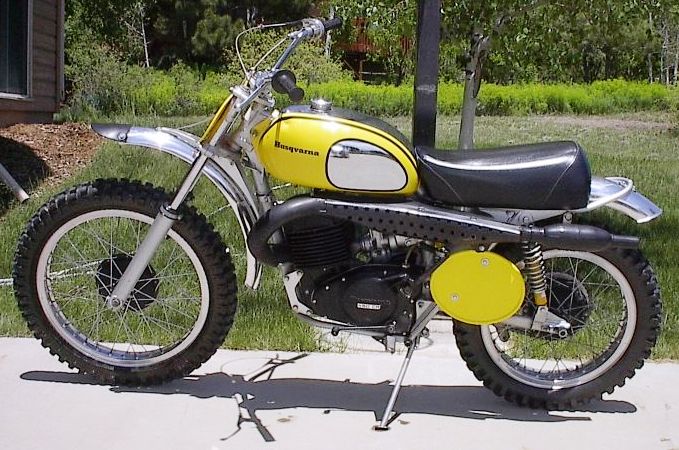
CZ: Don’t confuse the CZ Enduro with the CZ MXers. They produced an abysmal 250 Enduro in 1973 and 1974 that was nothing more than a collection of leftover parts from past years that didn’t like each other. These bikes were slow, heavy and dreadfully dull in the performance department. CZ also made a 125 racer that, oddly, weighed two pounds more than their 400 model. The cylinder liner was about two inches thick, horsepower was a faint gasp, dry weight was 242 pounds, and suspension was short and stubby. It would not beat a Buick station wagon to the first turn.
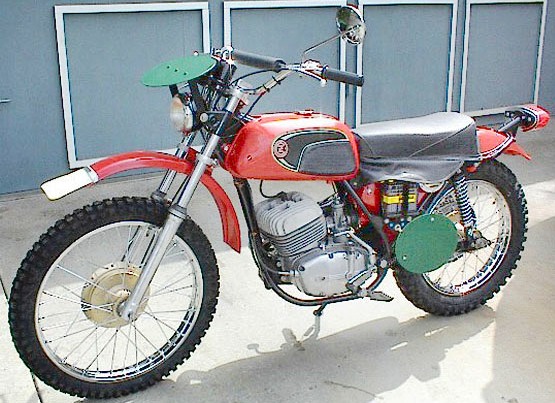
YAMAHA: No doubt about it, the single worst bike Yamaha ever made was the SC500 Scrambler. This four-speed slug seized with regularity, shook its steering head like a hooked trout, hopped around like a rabbit on diet pills and stalled when the rider least expected it. Some kind of fun machine, eh? Forget about the DT-l MX and the RT-MX models. They’re as common as pig tracks and handle about the same.
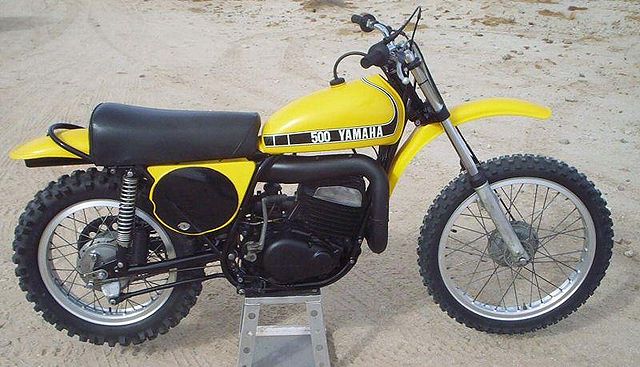
HONDA: Quite possibly the worst four-stroke ever built was built by the best builders of four-strokes, Honda. They produced the XL175 in 1973 and have prayed the world would forget them. Ditto for the XL350. However, a Champion-framed XL350 of that era might be worth considering.
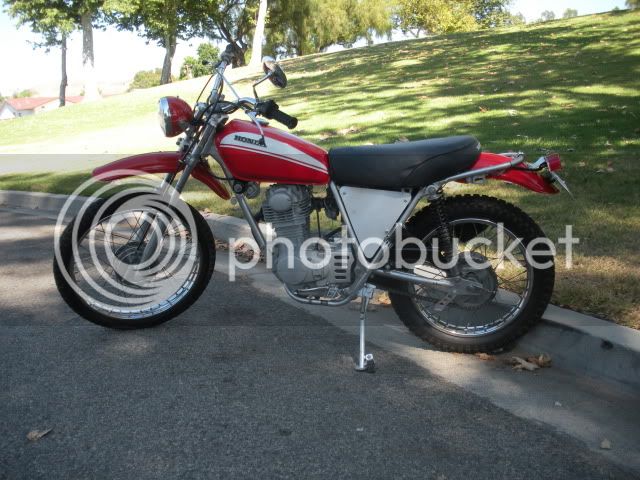
BULTACO: Lots of losers, here. Avoid the Astros like they were dipped in toxic waste. Faster than a speeding bullet, the 1971 through 1973 Astros had a lifespan about equal to a gnat trying to bench press a hippo.
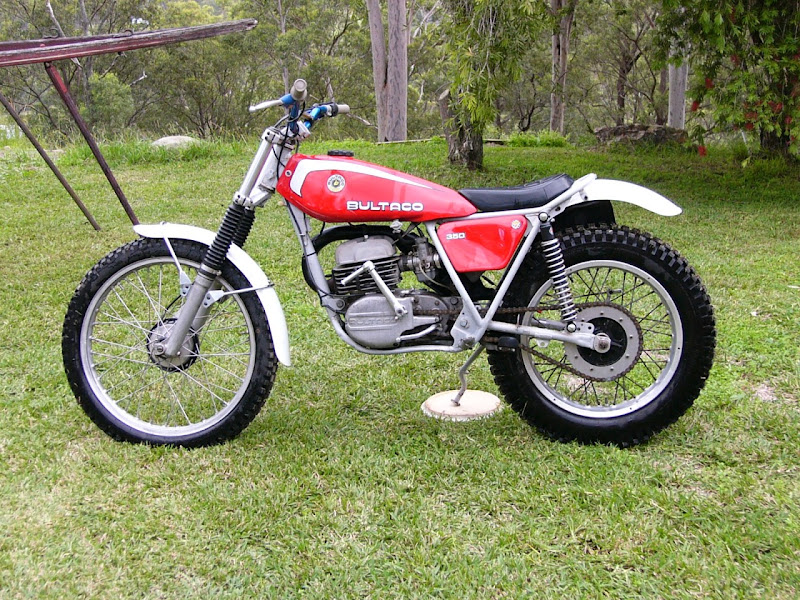
KAWASAKI: Kawasaki offered a version of their Bighorn for racing in 1972; some called it a Pighorn. Don’t get one. A few MXers were offered in 1974. All were grim.

SUZUKI: Ahh yes, we come to one of the truly bad bikes of the 70s, the awesome TM400 Cyclone. Few dirt bikes have ever had so much horsepower wrapped in a chassis more suited for gardening work. You can find these bikes all over the place, real cheap. Leave them where you find them.

OSSA:They made a hot version of the MX model, much like the Bultaco Astro, called the TT Stiletto. It, too, blew up with monotonous regularity.

MISCELLANEOUS
They’re out there, in droves. So avoid droves as you search for a vintage racer.
Good ones to put on your must-miss list are:
Bridgestone
DKW
Carabella
Jones/Islo,
Cooper
Harley/Aermacchi
Puch
Hercules,
Sachs
Monark
Rokon
Benelli
Can-Am
Holder
AJS
Tyran
Zundapp
American Eagle
Mojave
And who knows what else? If you want to take one of these oddities and restore it, and put on display on your coffee table, then by all means do it. Just don’t plan on riding it a whole lot.
Consider yourself a curator of sorts - a one-man museum. That’s not all that bad.
POINTERS
When you go out to hunt for your vintage racer, by all means, buy more than one. Recently, a friend who bought three ratty CZs in one weekend for a few hundred bucks total and was able to put one decent vintage racer together out of the mess, and had a bunch of nice parts left over.
You have two ways to go: buy a more-or-less restored vintage racer for big bucks, or buy a junker and try to shape it yourself for low bucks. When you’re buying basket cases, or dust balls, hammer the price way down.
A CZ 250 with the engine in a milk crate should go for literal peanuts. Examine the pile of parts closely. As long as they’re not rust-damaged, chances are they’re usable
In fact, if you plan to build and race a vintage bike, consider buying a half-dozen unassembled hulks. But check for chronic wear areas, For example, CZs with un-serviced swingarms often froze up and effectively were ruined. Maicos needed primary side service on a regular basis. A clean 1971 400 square barrel with a bad primary and secondary drive, as well as a blown clutch, is no bargain, no matter how low the price is.
When you buy spares, such as rings and pistons, from the vintage bike suppliers, consider purchasing multiples and asking for a price break. If you’re going to ride the bike, you will run through top-end parts regularly.
Learn how to make your own gaskets for older bikes with hard-to-find parts.
Get a good workshop manual and find out the part numbers and sizes of the various bearings, seals and such. With this information, you can then find out which parts from other years will fit your vintage racer. In a popular model, the parts spread can be as much as five or six years.
Learn how to work with fiberglass. It’s not that hard, and it will enable you to fix otherwise dead glass. Find a good bearing house and you’ll find that bearings are international in scope and sizing. Once you know the sizes you need in metric measurements, you’ll be able to duplicate what you need easily.
Within types, you’ll find parts interchangeability. Most of the Euro bikes have interchangeable bearings, pistons and rings. For example, many Husky and Maico clutch plates are identical. You’ll find that Suzuki, Yamaha and Kawasaki have many of the same internal parts, especially in the fork and shock department. Honda stands apart with its own Showa line.
RIDING IT
When you get your vintage bike built, by all means, ride it! Don’t be one of those dorks who slavishly build it and then cover it up with a sheet. After all, you’re trying to bring a bit of the past back to the present. Share your bike with the public. Stimulate interest in vintage bikes. Share sources and secrets with those who are interested. Enjoy it.
After all, we are simply trying to recreate a piece of a simpler time. A time when you just put gas in your stock bike and went riding. A piece of the past. Vintage. Indeed.
* from superhunky.com
Okay, the bug has taken a chomp right in your "gotta-have-one" vein. You absolutely must have a vintage bike. Rational thought has nothing to do with it. You’ve seen these pristine examples at the races competing in the vintage class, and steam is coming out of your nostrils.
Hold on, sport. There are a few things you ought to know before you run out and buy a dusty old 1971 250cc WartHog Mark II.
WINNERS
First off, there are good vintage bikes and bad ones. Not so much in how competitive they are, but in several other important areas, such as ease of finding parts, basic reliability of the bike and resale value should you decide to change horses later on downstream.
We think the following bikes (in no particular order) are excellent candidates:
MAICO: Square-barrel models from 1970 thru 1972.

MAICO: Radial 250s and 400s (1973 and 1974). Avoid the 450cc models, as they had troublesome clutches and were not any faster than the 400s.

HUSKY: Any model from the late '60s through 1971. Avoid the 1972 and 1973 models, as they were 25 pounds heavier than the older bikes and not very reliable. 1974 was a decent year, except for the 450 Desert Master.

CZ: If you can find an early twin-pipe model, grab it, no matter what the condition. The price of these highly sought-after models keeps going up steadily. Alternatives are most any 250, 360 or 400 model. Particularly good years were 1970 and 1971.
YAMAHA: Most any solid DT-1 would make a great trail bike and parts are readily available. Early (1969 thru 1971) MXers were fast, but were evil handlers. Still, there are many mods available to make them work acceptably. Early YZs are great vintage bikes and the horsepower they put out is almost competitive today.

HONDA: Find an old XR-75 and you’ll have the world’s favorite pit bike. Find a clean 1973 125 or 250 Elsinore and you’ll have a superb vintage racing bike.


KAWASAKI: There was a 100cc racer made in the late 60s that put out a guaranteed 18.5 hp. I believe it was called a Centurion. Find one of these and you’ll smoke many of the full-sized bikes.

Kawasaki also made a rotary-valved 238cc racer that was a rocket ship (around 1970) that pumped out some outrageous horsepower and gobs of low-end torque. Restore one and holeshots will be yours. There was also a Rickman-framed version of that bike that was a bunch lighter than the stock Kawasaki. Finding one will not be easy, but if you can locate one, go for it.

SUZUKI: One model stands out, the 1973-74 TM-250 Challenger. Smaller, lighter and nowhere near as violent as the TM-400, it had a few handling quirks, but was fast and reliable. They also offered a screaming little 100cc version with good handling traits. This yellow zonker would do well in vintage racing and was more reliable than a claw hammer.

BULTACO: Face it, the beautiful blood red Pursangs were faster than stink and about as reliable as a candle in a windstorm. If you restore one, do you think it’ll be any more reliable than it was originally, just because you put a ton of tender loving care in the rebuild? Still, these early Buls were classy-looking, supple handlers and are handsome enough to be considered true classics.

They made a Bultaco in 1968 called a Bandito. It was a 360cc MXer with enough horsepower to spit rocks through windshields in the parking lot. It also handled like someone left out the swingarm pivot bolt. But, lordy, was it a thundering rocket ship! Get one and learn to respect it; people will flock around and oooh and aaaah a lot.

Some of the open class Buls up to 1974 are excellent candidates for vintage racing. They had smooth low-end torque, handled well, were lightweight and proved more reliable than the hand grenade 250cc models. Still, plan on babying the gearbox if you want it to live.

MONTESA: Other than a white-framed, orange-glassed Cappra, the entire line of Montesas is simply not worth getting into. Even that 250 Cappra weighed 242 pounds, very heavy for a middleweight of any era. If you can locate a 1974 Vehkonen Replica (VR-250), it’s worth considering.
GREEVES: Parts are not easy to come by, and they are not competitive, but they are unique enough to merit your attention. Resale value alone makes them worthwhile, and they do look funky. Best bets are 250s and 360s from the late 60s and the early 70s. If you want to do well in vintage racing, consider one of the 380 QUB Greeves from late 1972 or 1973.

OSSA: In the early 70s, Ossa produced the dynamite Stiletto, a 250cc racer with a wide spread of power and excellent reliability. I’ve always thought that Ossa was the cream of the crop of Spanish bikes.

Late in 1974, Ossa released the first Phantom, a 197-pound missile that set new standards for performance. Only a cruddy set of Betor shocks kept this bike from being a world-beater. That, and a confused company that wasted all of its money on small-bore road racing efforts.

PENTON: John Penton had KTM build him some great bikes, and the best of these were the 250 and the Mint 400, a 352cc machine that weighed little more than a 250. You could win a vintage race on one of these beauties, and parts are still around.

HODAKA: Think about a 1973 Combat Wombat or a 1972-73 Super Rat if you want a bike with a huge chromed tank and a lot of personality. Parts are readily available.


TRIUMPH: Go for it! No question about it, a Triumph is one of life’s true joys. If you haven’t ridden one, then shut up. Forty cubic inches of horsepower is not to be sneezed at. And if you can locate a Rickman Triumph in good shape, don’t buy it. Instead, call me and let me buy it. Many consider these the most beautiful dirt bikes ever built. Yeah!

BSA/NORTON/ROYAL ENFIELD/MATCHLESS, ETC, ETC: We sort of lumped these all together. You either are a British bike fan, or you are not. Show up at the races with a fully restored British twin or single, and spectators will slobber and drool all over the ground. Parts are still around, but pricey. Resale value is good.

BEST BETS: Consider CZs, any good Husky, a clean Maico, or a 1973 Elsinore. A good YZ or a dirt Triumph will be a knockout for years to come.
LOSERS
Look, if you really want to restore one of the "off-brands," or unpopular bikes, go right ahead. Just don’t plan on racing it in the vintage class. Reasons are many, but the prime ones are high part prices, poor parts availability, bad reliability record, non-competitive nature of the beast, lousy handling, and all the accompanying traits of a rare or unpopular machine.
Build it, ride it every now and then, let people enjoy looking at it and hearing it run, but don’t plan on using it on a regular basis. We feel that dirt bikes are meant to be ridden and enjoyed. Our list of losers, admittedly incomplete due to space limitations, is, nonetheless, extensive:
MAICO: Forget about racing the 125cc six-speed Maico. It took a mad dog genius to keep the gearbox alive and was a nightmare to service.

HUSKY: Husky would rather forget the 450 Desert Master. It was put together by engineer Ruben Helmin at the behest of a relative, and he still frowns when you mention this model to him. Husky had wretched years in 1972 and 1973. Go earlier. Go later. Just avoid this time period. Another loser of this era was the 360 Enduro, quite possibly the most embarrassing woods bike Husky ever built.

CZ: Don’t confuse the CZ Enduro with the CZ MXers. They produced an abysmal 250 Enduro in 1973 and 1974 that was nothing more than a collection of leftover parts from past years that didn’t like each other. These bikes were slow, heavy and dreadfully dull in the performance department. CZ also made a 125 racer that, oddly, weighed two pounds more than their 400 model. The cylinder liner was about two inches thick, horsepower was a faint gasp, dry weight was 242 pounds, and suspension was short and stubby. It would not beat a Buick station wagon to the first turn.

YAMAHA: No doubt about it, the single worst bike Yamaha ever made was the SC500 Scrambler. This four-speed slug seized with regularity, shook its steering head like a hooked trout, hopped around like a rabbit on diet pills and stalled when the rider least expected it. Some kind of fun machine, eh? Forget about the DT-l MX and the RT-MX models. They’re as common as pig tracks and handle about the same.

HONDA: Quite possibly the worst four-stroke ever built was built by the best builders of four-strokes, Honda. They produced the XL175 in 1973 and have prayed the world would forget them. Ditto for the XL350. However, a Champion-framed XL350 of that era might be worth considering.

BULTACO: Lots of losers, here. Avoid the Astros like they were dipped in toxic waste. Faster than a speeding bullet, the 1971 through 1973 Astros had a lifespan about equal to a gnat trying to bench press a hippo.

KAWASAKI: Kawasaki offered a version of their Bighorn for racing in 1972; some called it a Pighorn. Don’t get one. A few MXers were offered in 1974. All were grim.

SUZUKI: Ahh yes, we come to one of the truly bad bikes of the 70s, the awesome TM400 Cyclone. Few dirt bikes have ever had so much horsepower wrapped in a chassis more suited for gardening work. You can find these bikes all over the place, real cheap. Leave them where you find them.

OSSA:They made a hot version of the MX model, much like the Bultaco Astro, called the TT Stiletto. It, too, blew up with monotonous regularity.

MISCELLANEOUS
They’re out there, in droves. So avoid droves as you search for a vintage racer.
Good ones to put on your must-miss list are:
Bridgestone
DKW
Carabella
Jones/Islo,
Cooper
Harley/Aermacchi
Puch
Hercules,
Sachs
Monark
Rokon
Benelli
Can-Am
Holder
AJS
Tyran
Zundapp
American Eagle
Mojave
And who knows what else? If you want to take one of these oddities and restore it, and put on display on your coffee table, then by all means do it. Just don’t plan on riding it a whole lot.
Consider yourself a curator of sorts - a one-man museum. That’s not all that bad.
POINTERS
When you go out to hunt for your vintage racer, by all means, buy more than one. Recently, a friend who bought three ratty CZs in one weekend for a few hundred bucks total and was able to put one decent vintage racer together out of the mess, and had a bunch of nice parts left over.
You have two ways to go: buy a more-or-less restored vintage racer for big bucks, or buy a junker and try to shape it yourself for low bucks. When you’re buying basket cases, or dust balls, hammer the price way down.
A CZ 250 with the engine in a milk crate should go for literal peanuts. Examine the pile of parts closely. As long as they’re not rust-damaged, chances are they’re usable
In fact, if you plan to build and race a vintage bike, consider buying a half-dozen unassembled hulks. But check for chronic wear areas, For example, CZs with un-serviced swingarms often froze up and effectively were ruined. Maicos needed primary side service on a regular basis. A clean 1971 400 square barrel with a bad primary and secondary drive, as well as a blown clutch, is no bargain, no matter how low the price is.
When you buy spares, such as rings and pistons, from the vintage bike suppliers, consider purchasing multiples and asking for a price break. If you’re going to ride the bike, you will run through top-end parts regularly.
Learn how to make your own gaskets for older bikes with hard-to-find parts.
Get a good workshop manual and find out the part numbers and sizes of the various bearings, seals and such. With this information, you can then find out which parts from other years will fit your vintage racer. In a popular model, the parts spread can be as much as five or six years.
Learn how to work with fiberglass. It’s not that hard, and it will enable you to fix otherwise dead glass. Find a good bearing house and you’ll find that bearings are international in scope and sizing. Once you know the sizes you need in metric measurements, you’ll be able to duplicate what you need easily.
Within types, you’ll find parts interchangeability. Most of the Euro bikes have interchangeable bearings, pistons and rings. For example, many Husky and Maico clutch plates are identical. You’ll find that Suzuki, Yamaha and Kawasaki have many of the same internal parts, especially in the fork and shock department. Honda stands apart with its own Showa line.
RIDING IT
When you get your vintage bike built, by all means, ride it! Don’t be one of those dorks who slavishly build it and then cover it up with a sheet. After all, you’re trying to bring a bit of the past back to the present. Share your bike with the public. Stimulate interest in vintage bikes. Share sources and secrets with those who are interested. Enjoy it.
After all, we are simply trying to recreate a piece of a simpler time. A time when you just put gas in your stock bike and went riding. A piece of the past. Vintage. Indeed.
* from superhunky.com




